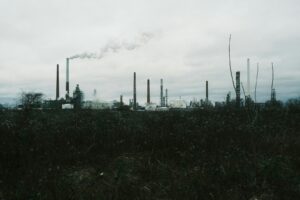Lightning strikes in the Arctic are set to more than double as the climate warms, according to a new study published in the journal Nature Climate Change.
In 2015, Alaska saw an extreme increase in the number of wildfires, in total more than 5.1 million acres of land burned due to 770 fires across the tundras and forests of the northernmost state.
To assess why these fires occurred, researchers at the University of California looked at over twenty years worth of NASA satellite data on lightning strikes in the region to see if there was a connection.
By using future climate projections from multiple models used by the United Nations, the team estimated that an increase in atmospheric convection has led to more intense thunderstorms and as a result more lightning strikes.
The researchers have highlighted that this is very dangerous for the Arctic ecosystem, the fires burn away short grasses, mosses, and shrubs that are important components of Arctic tundra ecosystems.
The fires also mean the melting of permafrost, the perennially frozen soil that defines much of the Arctic landscape. Permafrost stores a lot of organic carbon that, if melted out of the ice, will convert to carbon dioxide and methane, which, when released, will drive even more warming.
James Randerson, a professor in UCI’s Department of Earth System Science who co-authored the study, was part of a NASA-led field campaign that studied wildfire occurrence in Alaska during 2015, said: ‘2015 was an exceptional fire year because of a record number of fire starts. One thing that got us thinking was that lightning was responsible for the record-breaking number of fires.
‘This phenomenon is very sporadic, and it’s very difficult to measure accurately over long time periods.
‘It’s so rare to have lightning above the Arctic Circle, hopefully, these results will galvanize calls for new satellite missions that can monitor the Arctic and boreal latitudes for lightning strikes and the fires they might ignite.’
Photo Credit – Pixabay
















